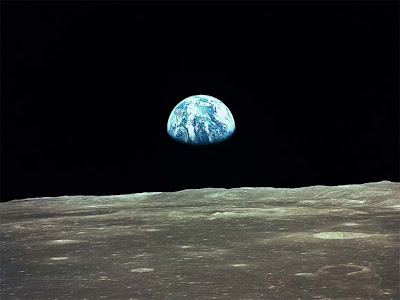Recently I've been reading alot of material on the solar system following up from the news and pictures being retrieved from NASA's Curiosity Rover.
One of the things I stumbled across was on a theoretical planet called Theia. It does not currently exist, and may not have existed to begin with, but poses a very convincing argument to explain the evolution of our home star system.
Firstly, did you know that if we include the Dwarf Planets, there are 13 planets in our solar system? It's true!
Picture From: http://en.wikipedia.org/wiki/File:Solar_System_size_to_scale.svg
What's even crazier is there are 166 naturally orbiting satellites (moons ect.) orbiting around these! Jupiter has 63 moons alone!
Most of us should be familiar with the Big Splat Theory or the Giant Impactor Theory, where a near Mars Sized object slammed into the Earth. The hypothesis states that the Moon was formed out of the debris left over from a collision between the Earth and a body the size of Mars, approximately 4 and a half billion years ago!. The object is known as Theia, for the mythical Greek Titan who was the mother of Selena, the goddess of the Moon.
Lets go back 4.57 billion years ago to the time when the Earth, other planets and all the asteroids began forming from the solar nebula. It is though that after the first 1-2 million years a lot of the gas that originally made up the solar disk has been blown away and the larger grains and smaller planetesimals that have formed are left.
At this stage in the solar systems evolution I would personally like to think that the solar nebula at that point looked somewhat like the rings of Saturn, especially in the further reaches of the solar system where the ices are able to coalesce.
Around 25 million years after Earth was distinctively formed, Earth already had 80% of it's mass! (Keep in mind, this is still over 4 BILLION years ago) but it still was surrounded by smaller debris, and interestingly this is where we think Theia formed as well, in more or less the same orbit as the Earth. At this stage Theia is thought to be about 10% of the Earths mass or about the same size as Mars.
Moving forward even further to about 50 million years after its initial formation the Earth has reaches 90% of its mass and is finally becoming a bit differentiated, the time when the iron core, mantle and crust were starting to distinctively separate. For some unknown reason it is at this time that Theia is expected to have for some reason gone and been disturbed, and had being propelled into another orbit. One which resulted in an immediate collision with the Earth.
This collision blasted humongous amounts of the Earth into it's orbit, and over time, much like how the plants and Saturn's rings formed, these pieces coalesced into larger objects, and eventually the moon (although, a much smoother moon than it is today, thanks to the late-heavy bombardment).
Image Credit goes to NASA
This is the story of the Big Splat, the story of Theia.


No comments:
Post a Comment